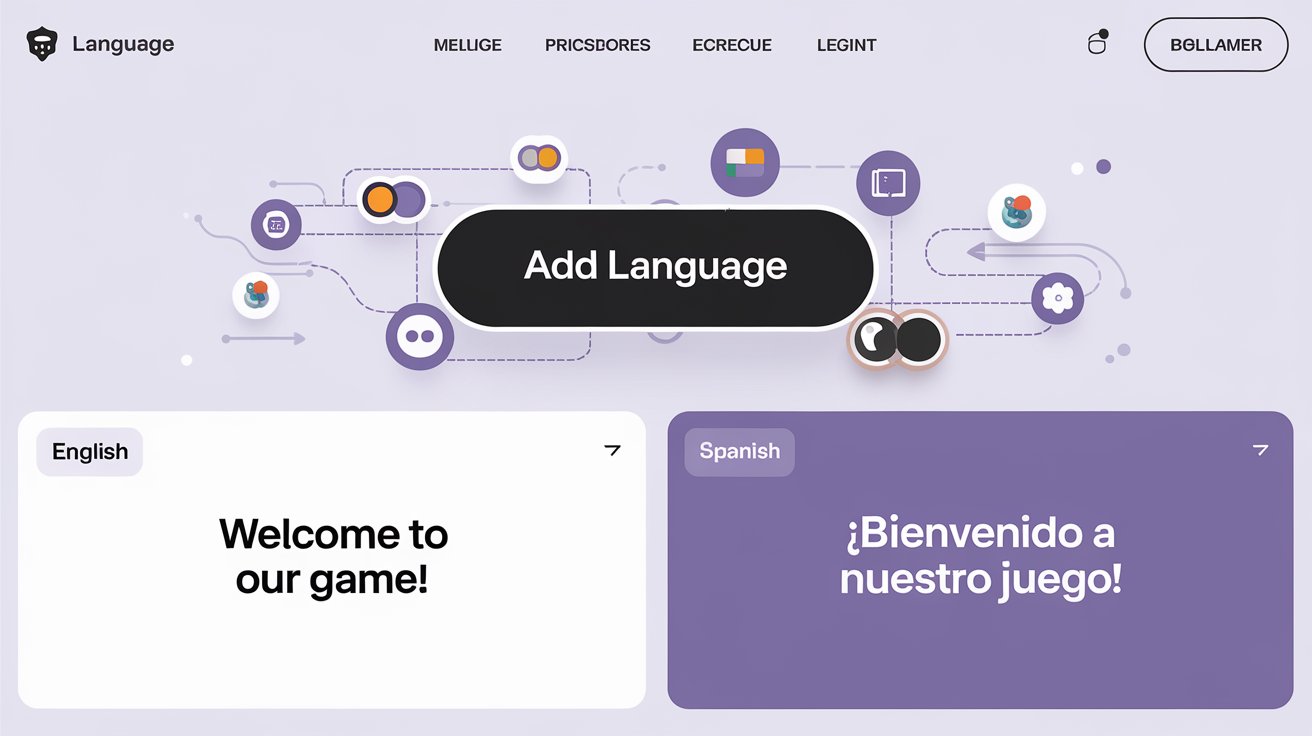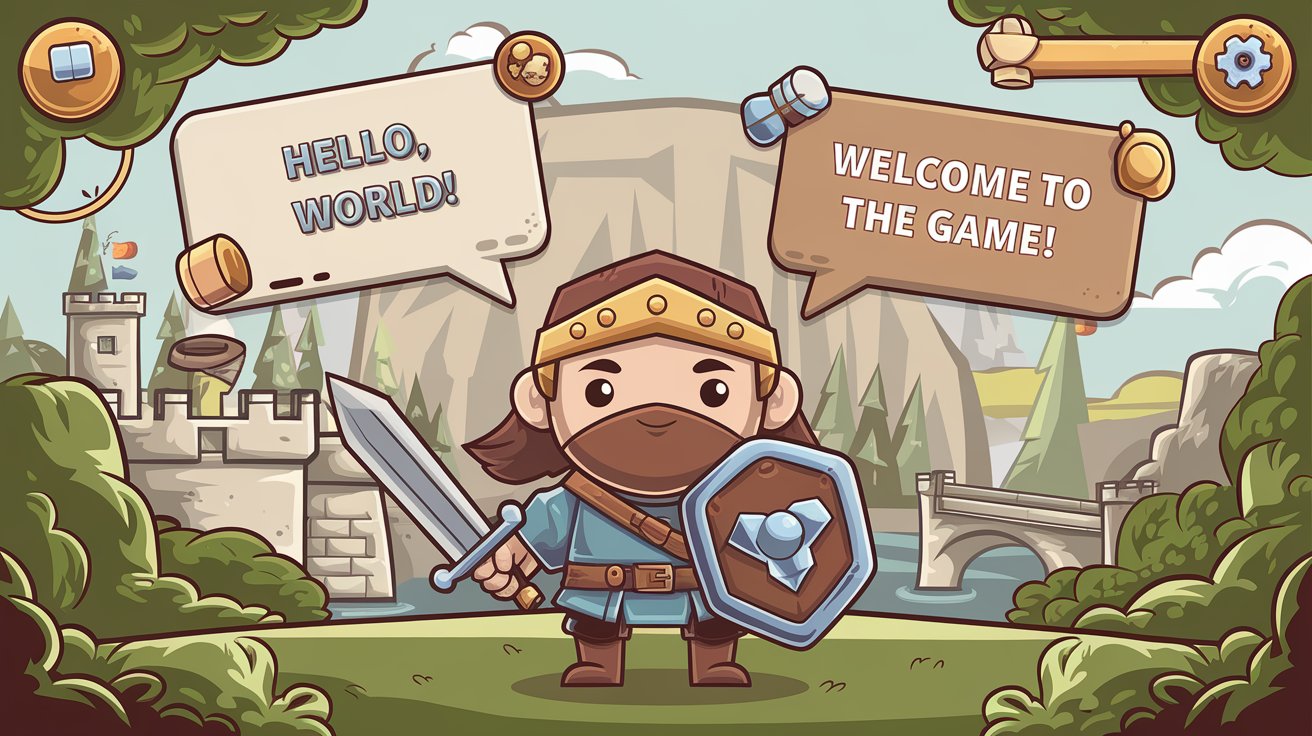
How Game Localization Transforms User Experience: A UX Designer's Guide
The global gaming industry is very diverse with millions of players of different cultures all over the world. In this context, game localization has been identified as a critical factor that can greatly improve the UX. This is where game localization comes in as a complex process of adapting content to specific cultural contexts, languages, and user’s preferences to provide the best possible experience for players from around the world.
This article looks into how game localization affects the user experience, providing useful insights for UX designers looking to create games that appeal to a broad audience.
Understanding Game Localization Beyond Translation

As we know, game localization involves adapting a game’s text, audio, visuals, and overall gameplay to suit the cultural and linguistic nuances of a specific region. This ensures a seamless user experience by making the game feel native to the audience. For instance, while a word-for-word translation may deliver the basic idea, proper localization ensures that cultural references, humor, and emotions resonate with players.
Read also: Indonesian Game Localization: Best Practices and Common Mistakes
Why UX Designers Should Prioritize Localization
UX designers play a crucial role in crafting intuitive and immersive gameplay. When UX design integrates game localization, it enhances accessibility, reduces cognitive load, and fosters emotional connections with players. A poorly localized game can lead to misunderstandings, confusion, or even offense, ultimately damaging the user experience.
Key Components of Game Localization for Exceptional User Experience
1. Linguistic Adaptation
Effective linguistic adaptation goes beyond translating text; it captures the tone, intent, and cultural nuances of the content. For instance, a quest description in a role-playing game (RPG) must convey the same sense of urgency and adventure across all languages.
2. Cultural Sensitivity
Cultural sensitivity ensures that imagery, themes, and references align with the values of the target audience. For example, certain symbols or gestures in one region might be inappropriate or offensive in another. By addressing these factors, game localization enhances the inclusivity of the user experience.
3. Technical Integration
From right-to-left languages like Arabic to languages requiring complex characters like Japanese, the technical aspects of game localization are vital. A well-designed UX interface accommodates these challenges, ensuring smooth navigation and readability for players.
Read also: Success in Game Localization: Strategies for Capturing New Markets and Players
The Benefits of Game Localization for User Experience
1. Broader Audience Reach
Localized games attract diverse audiences, expanding a game’s market share. Players are more likely to engage with a game that feels tailor-made for them, significantly improving their user experience.
2. Enhanced Emotional Engagement
Games tell stories, and the emotional impact of a game depends on the player’s ability to understand and relate to its narrative. Through game localization, UX designers can ensure that the storyline, character dialogues, and emotional arcs resonate with players globally.
3. Improved Retention and Loyalty
When players feel understood and catered to, they are more likely to remain loyal to a game. By investing in game localization, developers enhance the user experience, encouraging repeat engagement and long-term loyalty.
Steps UX Team Can Take to Optimize Game Localization
Optimizing game localization requires a strategic approach that ensures seamless integration of localized content while enhancing the overall user experience. Here are actionable steps UX teams can take:
1. Involve Localization Early in the Design Process
- Why it Matters: Waiting until the game is fully developed to localize content can lead to significant rework, increased costs, and inconsistencies in the user experience.
- How to Implement: Include localization experts in the early stages of UX design. Plan layouts and UI elements that can adapt to varying text lengths, character sets, and cultural preferences.
2. Create Flexible UI/UX Designs
- Why it Matters: Different languages may require additional space or unique text direction (e.g., right-to-left for Arabic), affecting the interface layout.
- How to Implement: Use scalable and modular UI components that can easily adapt to different localization needs. Test for font compatibility and spacing issues across multiple languages.
3. Develop and Use Style Guides for Localization
- Why it Matters: Ensuring uniformity across localized versions is essential to uphold brand identity and provide a seamless and unified user experience.
- How to Implement: Create a style guide outlining preferred tones, vocabulary, and formatting for each target market. Include visual design elements that respect cultural preferences, such as color schemes and symbols.
4. Conduct Cultural Usability Testing
- Why it Matters: Localized games might still fail to meet user expectations if cultural nuances are overlooked.
- How to Implement: Perform usability testing with players from the target regions to gather feedback on localized content. Iterate designs based on insights to ensure alignment with local expectations.
5. Leverage Translation Technology with Human Oversight
- Why it Matters: Tools like machine translation can speed up the localization process but may lack cultural sensitivity, which is essential for a positive user experience.
- How to Implement: Use AI-powered localization tools for efficiency but involve human linguists to ensure accuracy and cultural relevance. Perform quality assurance (QA) checks on all localized content.
6. Test Localization in Real Gameplay Scenarios
- Why it Matters: Errors in localization can disrupt gameplay, leading to frustration and a poor user experience.
- How to Implement: Simulate real gameplay with localized versions to identify bugs, layout issues, and mistranslations. Test across different devices to ensure a consistent experience on all platforms.
7. Foster Collaboration Between UX and Localization Teams
- Why it Matters: Seamless communication between UX designers and localization experts ensures that both teams align on goals and deliver high-quality results.
- How to Implement: Use project management tools to facilitate collaboration. Schedule regular meetings to discuss localization progress and address challenges.
8. Design for Accessibility
- Why it Matters: Accessibility features can enhance the user experience for players with disabilities while ensuring inclusivity in all localized versions.
- How to Implement: Incorporate features like customizable font sizes, subtitles, and audio descriptions. Ensure localized content adheres to accessibility standards.
Read also: Why Indonesian Game Localization Is the Next Big Thing in Gaming
Challenges in Game Localization and How to Overcome Them

1. Balancing Consistency and Cultural Relevance
Maintaining a cohesive brand voice while catering to different cultural preferences can be challenging. UX designers can overcome this by establishing style guides that balance consistency with local adaptations.
2. Technical Limitations
Technical constraints, such as fixed interface dimensions, can complicate the localization process. UX designers should work with developers to build adaptable frameworks that streamline game localization and maintain a seamless user experience.
3. Time and Cost Constraints
Localization requires time and resources, which can delay game launches. Early collaboration between UX teams and localization experts can mitigate these challenges, ensuring timely delivery without compromising quality.
Emerging Trends in Game Localization for Better User Experience
1. AI and Machine Learning
AI-driven tools are revolutionizing game localization by speeding up translation processes and detecting cultural nuances. While AI enhances efficiency, human oversight ensures the user experience remains authentic.
2. Voice Localization
Voiceovers and character dialogues are increasingly being localized to provide a more immersive experience. Authentic voice localization enhances storytelling and creates deeper emotional connections with players.
3. Accessibility in Localization
Inclusive design principles are making localized games accessible to players with disabilities. Features like customizable subtitles and audio descriptions ensure an equitable user experience.
Game Localization as a UX Game-Changer
For UX designers, game localization is more than a technical process—it’s an opportunity to shape a globally inclusive and immersive user experience. By integrating localization into UX design strategies, developers can deliver games that resonate deeply with diverse audiences.
Whether you’re a developer aiming for a global release or a UX designer striving for inclusivity, localization is the key to success. Ready to transform your games? Partner with Digital-Trans Asia, your expert in game localization and delivering exceptional user experiences. Contact us today and unlock the potential of your games worldwide!